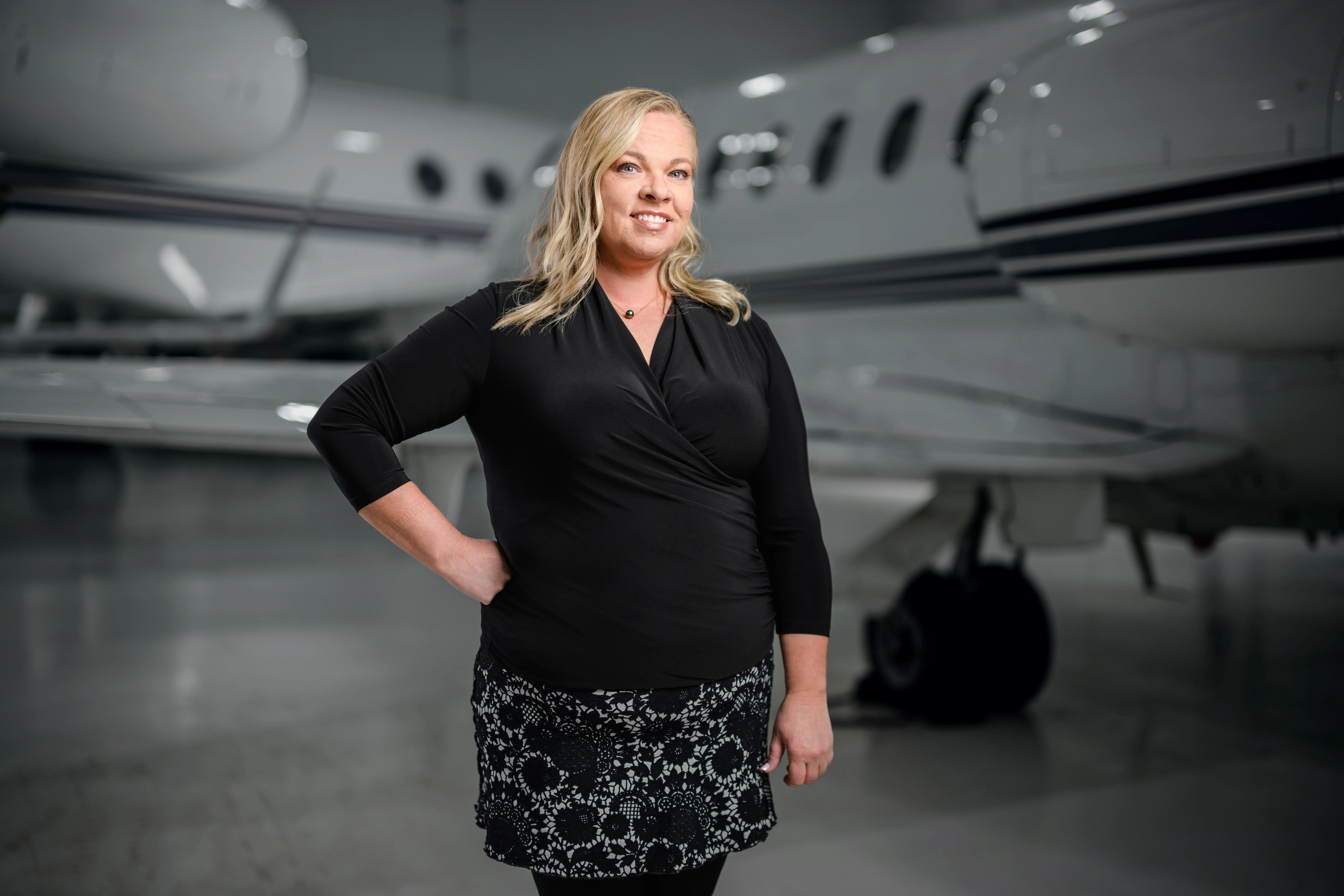
What Sets Pentastar’s Safety Standards Apart?
Jul 9, 2025
At Pentastar, safety is more than a requirement — it’s a reflection of who we are. It’s the lens through which we make our most important decisions, train our people and assess performance.
For us, safety is a living, evolving practice that adapts to changing technologies, regulations and real-world scenarios. That’s why our clients trust us, and why our team continues to push for higher standards, beyond full compliance.
To better understand how that commitment plays out every day, we spoke with Carl Barnes, VP of Flight Operations & Safety, and Maddie Robertson, Manager of Flight Safety & Training.
Their insights reveal not only what we do, but why we do it. From internal audits to client communication, and from training oversight to emergency preparedness, Carl and Maddie illustrate what safety looks like at Pentastar.
Q: How would you describe Pentastar’s approach to safety?
Carl Barnes: Safety is genuinely at the forefront of everything we do. Our Safety Policy Statement — signed by our President & CEO Brad Bruce and Chairman Edsel Ford II — names safety, security, regulatory compliance and quality as our top priorities. It drives everything we do from leadership strategy to frontline operations.
Maddie Robertson: If safety slips, the operation doesn’t hold. We start with that assumption. Everything else — customer service, business growth, etc. — relies on getting safety right.
Q: What does that look like, operationally?
Carl: Every executive meeting opens with a safety review. We look at reports from the previous week, discuss risks and examine how we responded. That structure is mirrored all the way down through senior leadership, safety committees and our monthly safety manager meetings.
Maddie: We also run biannual crew safety seminars, produce a quarterly newsletter and support anonymous reporting with QR codes posted across our facilities. The goal is to make reporting potential safety hazards as frictionless as possible.
Q: What internal mechanisms back up this safety culture?
Carl: Standard operating procedures guide every aircraft and are tailored where needed to meet best practices. We hold the highest rating from the International Standard for Business Aircraft Operations (IS-BAO Stage 3), and we’re a Wyvern Wingman Pro operator — one of the first in the world to earn the distinction.
Maddie: I manage our quarterly Wyvern audits, which go beyond basic compliance. They’re designed to identify areas where we can raise the bar. I also conduct audits of our training partners. Earlier this year, for instance, I joined a flight crew during simulator training to verify that the instruction aligns with our operational standards.
Q: That level of involvement — how common is it in the industry?
Carl: Not very. We place a great deal of trust in third-party simulator training vendors, and FlightSafety International — our primary partner — has a well-earned reputation for excellence. We follow a ‘trust but verify’ philosophy. Sending Maddie to observe training isn’t industry standard — it’s a choice we made to be better.
Maddie: We also have the structure to support it. I’m one of three safety managers. We also have a health, safety and environmental manager, an audit team and leadership that prioritizes this work. That kind of investment is rare.
Q: How do you explain all of this to passengers or clients?
Carl: We skip the acronyms and speak plainly. Clients aren’t usually aviation experts — they don’t need to be. We explain what we monitor and how: our audit credentials, our FOQA program that tracks flight data outside of incidents, our early adoption of safety management systems, etc.
The more experienced clients bring in outside auditors — firms like Van Allen or Jordan River Aviation. We’re also audited directly by other operators whom we provide charter services to, such as EJM. These are serious evaluators. Being vetted by them reinforces our standards.
Maddie: We’re also voluntarily entering the FAA’s Part 5 SMS programs years ahead of schedule. That means more scrutiny, more compliance. We’re already aligned with what will be required in 2027.
Q: What’s the operational value of exceeding safety standards?
Carl: It gives our clients certainty. They can focus on their lives or their work without second-guessing the flight.
Maddie: And pride. They’re investing in a company that treats safety as infrastructure, not PR. That resonates with a lot of people.
Q: Anything clients don’t see that you wish they did?
Carl: Emergency response. Every year, we run exercises with Fireside Partners — realistic scenarios, full debriefs. We’re moving to a digital, tactical response plan that automates protocols. It’s the kind of thing you hope never gets used, but if it does, it has to work.
Maddie: We should also call out our own training. Our team never sits still. We go to conferences, pursue certifications, stay current on SMS theory, auditing practices, everything. That’s how you stay relevant. That’s how you stay safe.
Safety at Pentastar shows up in how meetings begin, how data is reviewed and how training is approached to continuously level up. It’s a team of over a dozen professionals — Carl, Maddie, members of the senior leadership team and more — who show up every day to make sure that if safety is the baseline, then excellence is the habit.
Most operators meet expectations, but Pentastar starts there and keeps going. We audit our own partners. We rehearse emergencies as if they are actually happening. We bring on scrutiny before it’s required.
Because the point isn’t to pass a test. It’s to ask: what aren’t we seeing yet?

